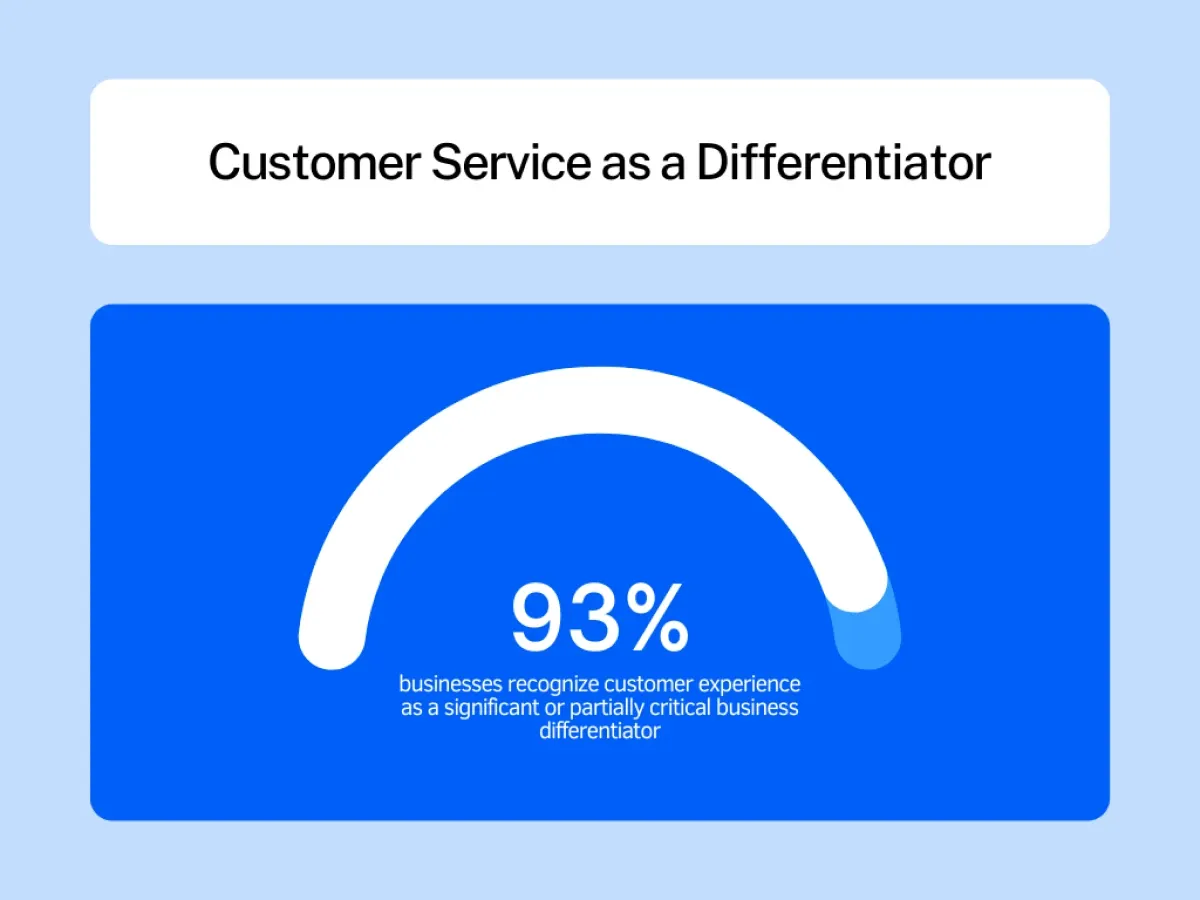A customer experience manager (CXM), a product manager, and a data analyst walk into the bar.
Bartender: “What can I get you guys?”
CXM (sighs): “I’d like a shot of patience. All my customers these days…”
Data analyst (raises an eyebrow): “Hold on! Let me take a look at the NPS scores and sentiment analysis from last week before you place your order. Perhaps we’re missing some signals.”
Product manager (slams his fist on the table): “Just get me whatever will stop those customers from complaining about the features that have taken us months to build!”
This could very well be a real conversation. The modern customers are complex, especially the ones that buy and use SaaS products. Their expectations are high, and they don’t have patience for features that don’t deliver value or for interfaces that feel like a jumble.
Businesses can't just wait around for customers to complain – if you do that, you'll be fighting a losing battle. Your customers will be irritated and your customer service team will be too.
93% of businesses recognize customer experience as a critical factor that sets them apart from competitors or contributes partially as a differentiator.

This means you need to anticipate customer needs and proactively address them. If you’re reacting once customers start frowning, you’re already too late!
This is where a Customer Experience Manager (CXM) equipped with the right tools and strategies comes in.
How a proactive CXM takes customer service from lagging to leading
Let's face it, the "wait and see" approach to customer experience is a recipe for disaster. Your customers interact with your company and products across many touchpoints – and they want to feel appreciated at each point. They will not tolerate friction and are unforgiving of bad experiences. 73% of customers will abandon a product after repeated negative interactions.

The reactive CXM trap
Imagine this – your customers have to chase you for answers; they have to wade through an interface they don’t like or understand; they keep holding on for eternity for a CXM’s response. Everything about this reeks of a losing strategy. It leads to –
- High customer churn – In a reactive strategy, CXMs are all about ticket deflection. By the time you address an issue, customers have already felt the pain. If they feel it too badly, they will say leave without so much as a ‘goodbye'.
- Limited visibility – CXMs that are reactive are blind to the whole picture. While they see what the problem is right now, they fail to identify bigger pitfalls like a broken workflow on the platform or a missing feature and they cannot get back to their teams internally to let them know a storm is coming.
- Missed opportunities to delight – A reactive approach to customer experience fails to capitalize on “wow” moments. Your teams keep running from troubleshooting one problem to the next. There is no spice to their life – except all the red-hot chili flakes the customers throw at them.
The power of a proactive CXM
A proactive CXM flips the script. Instead of reacting to issues, they know what the customer needs or will need in the future. This forward-thinking approach has a lot of advantages, not just for their own departments, but for the overall business –
- It boosts customer satisfaction – The happier the customers, the more loyal they will be. Proactive efforts made by a CXM build trust, customers feel valued and appreciated, and ultimately want to continue associating with the brand.
- It reduces effort on the customer’s end – A proactive approach means you’re eliminating unnecessary steps and roadblocks for your customers. For instance, consider a self-service onboarding flow, a much-adopted approach by leading SaaS platforms. Such flows are designed keeping the customers in mind – what will they want to know on day one? How do we make them understand our product without human intervention? How do we get them to the “aha moment” quickly? Whether through in-app tutorials or a knowledge center filled with articles, CXMs can empower customers right from the start so they don’t have to make an extra effort to reach out to you and say, “I need help to understand how this works."
- It turns them into brand advocates (hopefully!) – If, and only if, your customers truly value you, will they sing your praises and recommend you to others. By learning from your existing customers' experiences, potential customers can better understand if your business is the right fit for them – making social proof one of the most powerful marketing tools.
Strategies for anticipation and optimization
Proactive CXMs employ three key strategies to transform customer journeys into delightful experiences.
1. They predict customer needs before they arise.
Imagine a world where your customers don't have to scramble to renew a subscription or fret over a feature that is missing. Proactive CXMs leverage data analytics as well as direct customer feedback to anticipate the hurdles that customers could face and notify them of their mitigation plans or product roadmap. This keeps customers from getting anxious and proactively addresses issues that may arise.
2. They eliminate bumps to create a frictionless customer journey.
CXMs identify areas of friction – whether it has to do with an app or the platform, or in the website, or within the customer service process itself. This helps them to simplify procedures and eliminate anything unnecessary or likely to confuse customers.
3. They empower customers with knowledge
CXMs are not just about fixing issues. They also educate and empower their customers. This happens through proactive communication like via an email or in-app pop-up notification about a scheduled maintenance or app downtime. They also offer educational resources and tutorials to help the customer get the most value out of the platform.
The makeup of a successful customer experience manager
CXMs are clearly the champions of both the customers as well as of the product.

Here are some essential skills and responsibilities that make for a successful customer experience manager –
- Strategic vision – CXMs are all about making sure their customers have a fantastic experience, no matter where they interact with the business. Online, offline, you name it. They take what they learn from customers and turn it into actionable plans to make every interaction amazing.
- Customer advocate – CXMs are customer champions. They dig deep to understand what customers want, what annoys them, and what makes them happy. They then become the voice of the customer within the company, making sure everyone – from product to strategy to sales – hears their needs loud and clear.
- Constructive communication – CXMs need to be clear and empathetic in their communication with customers. There will always be scenarios that feel impossible to handle – a use case not catered to by the product or a bug caught in a feature at a critical time. The CXMs need to ensure that only they understand what the customer is dealing with, pre-empt their angst or even anger, and ensure that other stakeholders within the company also react positively and with empathy.
- Data-driven decision-makers – CXMs look to data to identify points of friction as well as moments of happiness. NPS (net promoter score) is one of their favorite metrics to track – it tells them how likely are customers to recommend a product to someone else. Clearly, a high NPS indicates a happier customer base while a lower score starts ringing alarm bells. Proactive CXMs don’t fly blind – data drives their plans on how they create a winning customer experience.
- Empowering leader and coach – CXMs don’t just manage a team of customer experience specialists, they also empower them. They guide them to develop a customer-centric mindset which means equipping them with the knowledge and the soft skills needed to deliver exceptional customer service. With a strong customer service manager at the helm, the entire customer service team becomes a force that drives customer satisfaction and unlocks loyalty.
Proactive customer service managers are indispensable for SaaS businesses
Businesses need to move beyond reactive measures and adopt a proactive strategy when it comes to delivering customer service. A customer experience manager who is proactive leverages data and direct feedback to predict customer needs, addresses them well before any red flags are raised, and strives continuously to create a sense of delight.
They also identify and eliminate pain points across all touchpoints, creating frictionless journeys from day one. They make it easy for customers to get what they need while providing them with educational resources for learning and using the platform independently.
Customers will spend more if they know they’ll receive great service. By prioritizing this, not only do CXMs increase customer satisfaction and loyalty, but also create an opportunity to command higher prices.
CXMs are thus at the heart of not only satisfying existing customers and driving user retention but also getting them to spend more and helping the business acquire new customers.















